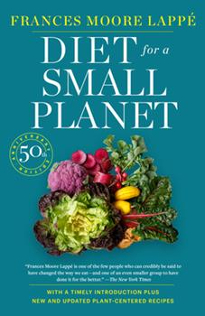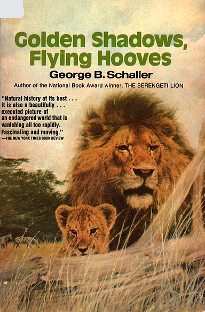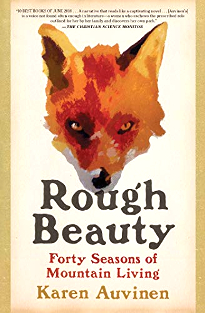I was looking for cookbooks at the library and came across this on the shelf. It was a quick read, and the first I’ve done that gives me a perspective of someone else who’s “been there.” I don’t know anything about the celebrity author except that she was on “Survivor” (which I didn’t see). It was that experience that made her realize she had a serious health issue- she’d always suffered from severe stomach pain and digestive problems, but they disappeared when she was on the reality show. Afterwards she realized she hadn’t eaten any bread or wheat products during that time- and pretty soon she got diagnosed with celiac disease (with difficulty). She wrote the book to provide information and give tips on how to navigate living “G-free”- everything from cleaning your kitchen to food shopping and what to do in restaurants or attending dinner parties. The forward is written by an actual doctor, and she quotes him a few times, but most of it is just written from her own personal experience.
I had mixed feelings about it all. On the one hand, I don’t think I have celiac disease, but I am becoming more certain that I have a gluten intolerance. I don’t experience the same symptoms this author did, but mine are significant enough that I feel like I never want to go backwards- I’ve been mostly gluten free for a few months now, and the few times I do make a mistake (didn’t know there’s gluten in soy sauce- oops! or probably in the barbecue my husband brought home once) I can definitely tell. Like her, it takes my body exactly three days to get back to normal- or what I hope is now my normal! I appreciated that she was honest about how hard it is to be gluten-free at first, about her personal slips, the moments when she just caved and ate things she knew would make her sick, or felt embarrassed to explain it to people, etc.
Well, so her book has a lot of descriptions and lists of what to avoid, how to read labels, how to tell friends or restaurant waiters what you can’t eat, and strategies for travel or eating out. Some of it affirmed what I have already learned, other details were new to me. I didn’t realize there’s gluten in many lotions and shampoos, for example. I knew to avoid teriyaki and soy sauce (there are gluten-free versions) but just realized the imitation vanilla I bought last month because the store ran out of the real thing (there’s still a lot of blank spaces on shelves here probably due to covid-related supply chain issues- and it’s totally random- one week there’s no milk, the next it’s cream cheese or onions or all the fresh green produce) well, the vanilla maybe has gluten (could be in the caramel coloring which is made from malt which is from barley which has gluten). It gets complicated you see. I don’t know for sure unless I call the manufacturer (a thing this author apparently has done repeatedly for many products) but I’d rather have real vanilla on my shelf again anyway so I’m just going to replace it.
What I found surprising was how fanatical she is about avoiding contamination. Maybe because I seem to just have an intolerance which is less severe, but I haven’t gone so far as to avoid touching bread crumbs on the counter, or washing my hands after fixing bagel for my kid, for example. I do wonder now though, if the nights I don’t sleep quite as well, or the days I have joint pain again, are following an accidental contact. It certainly doesn’t take much in terms of ingestion to trigger my symptoms I’ve found. (I have learned to avoid possible cross-contamination from walnuts in products I buy- having reacted to something that the only possible reason is that it was “made in a facility that also processes tree nuts”).
In terms of strategies- I thought I would learn something helpful here but I was a bit disappointed. I can’t picture dropping on the floor a cookie someone insisted I eat to avoid refusing it- or putting my plate in front of someone else at a dinner table while eating energy bars out of my lap. Her biggest one seems to be eat as much as you can before leaving the house, so you’re not hungry if you can’t eat where you go. This book is older, I’ve found many food items at the store are labeled “certified gluten free” now and most restaurants I’ve been to (the very few times we’ve eaten out recently) have things marked on the menu that are gluten-free (or can be made so upon request) so I don’t think I need to carry a special card around explaining what that actually means for restaurant staff (but I was annoyed that she stated in the book a copy of her diet card was provided in the back- and it was not there). The entire chapter about going gluten-free as a way to eat healthier was also rather off-putting to me. Yes, it might make you make healthier food choices because you simply have to avoid so many processed foods- but I do not think it’s an automatic way to loose weight and I was annoyed that she kept touting this as a weight-loss diet.
I’m sure there’s much better books out there about being gluten-free and I’ll probably look for some.
Borrowed from the public library.








